The biggest news coming out of the American Hop Convention at the end of January in Santa Rosa, CA was the necessary reduction of 10,000 acres (over 16%) of U.S. hop production.
The difficult case for acreage reduction was clearly made that the pandemic hangover has stunted beer production, and the growing inventory of warehoused hops is already 35 million pounds. Had it not been for a poor harvest by the three largest nations by production (U.S., Germany and Czech Republic), that excess inventory would likely exceed 50 million pounds today. Half a decade of continually increasing hop acreage has not been balanced with beer production, as demand faltered in 2020 and has still not recovered to 2019 levels. We confirmed with multiple growers that they were already planning to idle considerable acreage.
Complicating the situation further for hop growers is that cost of production went up approximately 21.4% since 2020, while yields declined last year. U.S. production went from 38.9% of global hop production in 2020 to 44.1% of global production last year, despite yields that were down 12%. It was worse elsewhere. Germany was down 29% and Czech Republic was down 50%.
What does it mean for breweries?
- For starters, acreage reduction will go into effect this year.
- Access to Spot markets will likely shrink over the next two years until the excess inventory is used up.
- Planning ahead to secure contracts will need to become en vogue again.
- Maybe not with 5 year forward contracts, but 2-3 year contracts.
- Cost containment efforts will have to increase as growers will have to increase pricing to survive.
US Craft breweries approaching saturation point
Bart Watson, Chief Economist for the Brewers Association provided early results from the annual BA survey. Gross responses were well representative of the membership, with 1,500 responses to date. This is the 14th consecutive year of data collected, and while based on Craft volume as defined, when asked, Watson said that the trends would be the same for all “Craft-style” breweries, regardless of the BA definition.
What is the saturation point?
Among the preliminary findings was that the total number of Craft breweries (open and newly opened, net of closings) showed an increase to over 9,400 Craft breweries in the U.S, with the current growth curve going flat by 2024. Ironically, 7 years ago at the same convention, Watson had predicted a saturation point for American Craft breweries would be approximately 10,000 Craft breweries.
IPAs continued dominance
IPA’s continue to grow in overall Craft dominance, approaching 45% share of Craft in scan data. However, the composition of the IPA subsegments have shifted since 2017. Increases were led by Imperial IPA and New England or Hazy IPA, while decreases have been seen by Session IPA and “other”. A dark horse identified was the growing popularity of IPA mix packs.
In styles, there is growth in Craft lagers and pilsners and medium hop styles are losing market share. Dan Love of Mother Earth Brewing presented insights into Idaho Craft segments that showed that while IPA dominance of 40% was consistent with the national BA survey results, the “Other Pale Lager” category representing styles such as hoppy lagers or pilsners, was the only category significantly up, increasing 16.6% over the year prior.
Craft Hopping Rates fairly stable
The average hopping rate hit 1.5 lbs per BBL among the Craft segment in 2015, and has been within about 5% of that number for the past 9 years, except for 2018, an outlier year with 1.7 lbs/BBL reported on the survey. Depending on who is reporting the number, the Craft-style segment represents 19% to 26% of all beer sales, and with such a high hopping rate vs. industrial beers, Craft-style uses three to four times the total volume of hops compared to global industrial beers.
Making a move: Hop Oils
An interesting finding in the BA survey was the decreasing use of hop pellets, declining from 84.7% to 78% of total usage. 43% reported some “downstream product” usage. Total usage of downstream products increased from 10.8% of pellet pound equivalents, to 19.5% of pellet pound equivalents in 2022. The increase was led by hop oils which grew from approx. 3% to nearly 12% year-on-year. Hello Hopzoil?
One of the reasons for the increase in downstream products usage was efficiency and the impact on yields and the importance to squeeze every dollar of revenue out of every batch. Inflation and cost pressures have almost made it a necessity for hop-forward styles.
New hop flavored yeast strains discussed
A question from the audience about new hop-flavored yeast strains recently introduced elicited some interesting, if not humorous discussion. A couple of the brewers on panels responded that they had tried them out of curiosity, but found that they missed the mark. “It’s like ‘Beyond Meat’ for brewing” said one brewer to laughter from the crowd. “There’s no ‘there’ there”, he said, assuring the audience that they represent no replacement for real hops.

